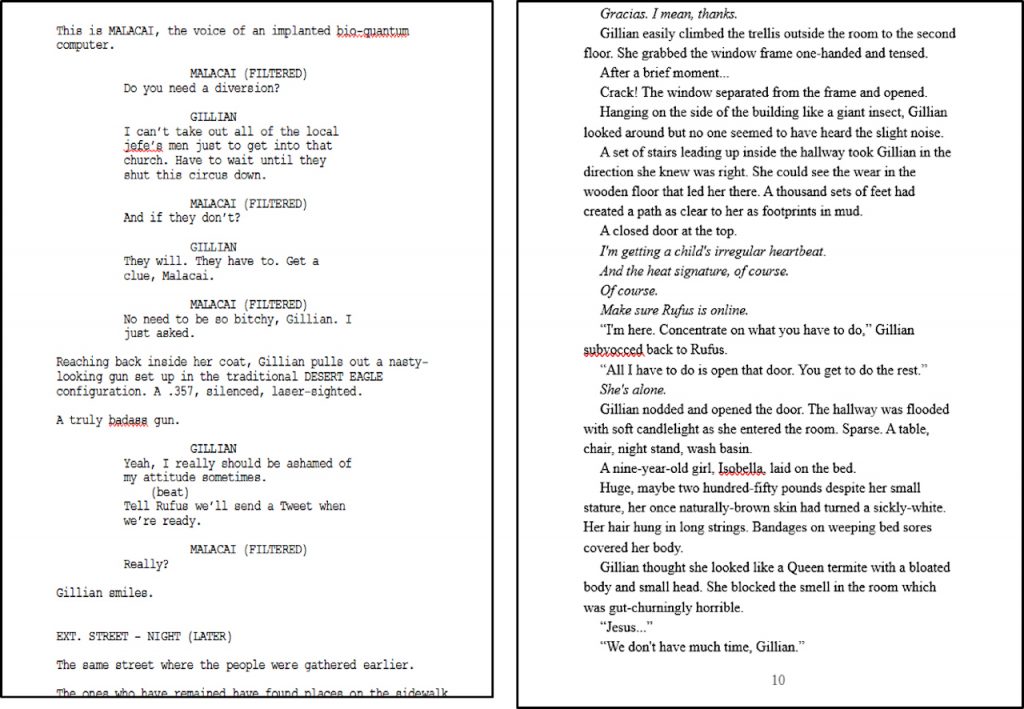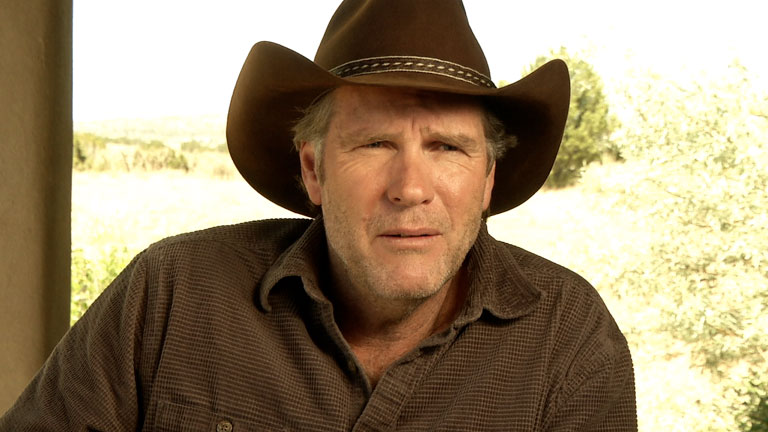- Why Are Screenplays So Hard To Write? (Part 1)
- Why Are Screenplays So Hard To Write? (Part 2)
If you’ve found the magic rubric that makes writing a film or TV script easy then I applaud your good luck and request a copy of your findings. Because after 25 years, 150 TV/movie scripts, a book or two on scriptwriting, and decades of teaching I’m still struggling.
Now, of course, my work is much better than it was when I started. But, I still fail more than I like to deliver on that great script. We all do. Even bonafide A-Listers write stinkers. Why?
Length/ Density
Scripts are both a joy and misery to write. Length is a reason. For commercial considerations, film scripts got stuck at 120 minutes for the most part. That allowed movie theaters to show the films the max amount of times per day. Great. 120 pages is nothing, really, not if you’ve ever tried to write a 300 page novel. But as nice as it is to ‘only’ have to write 1/3 of a novel, you’re also faced with another, more devastating issue because of it: density.
There’s a lot of white space on a script page. Just a casual glance tells you that. Which means that you have to accomplish the same thing story-wise as a novelist in much less space and time.
120 pages of script is about 30-40% fewer words than 120 pages of prose. Also, the pure density of a script is so much less than a novel, where dialogue is severely limited in how much space it takes up so page count is skewed.
Here’s a side by side of a page of script and a page of novel. Notice that vast difference in density from one to the other. I wrote both and I’m here to tell you that the script was much harder even though the novel took longer.

How Scripts Are Supposed To Be Written Makes Them A Pain
I’m old school where it comes to narrative in scripts. The first thing I tell my Intro students is, “If you can’t see it, hear it, or clearly intuit it, you can’t put it in a script.” This gets various responses, primary among is, “But I read a script by Big Time Screenwriter and s/he put stuff in for the reader.” Blah, blah, blah. If you want to entertain a reader, send them a TikTok of you eating something gross.
Now that’s not to say you can’t be entertaining in your writing, but rules are rules. Write a fabulous screenplay that’s impressive and will get you further in this business. It’s hard not to talk directly to the reader to explain yourself, but that’s the job. That’s one reason why it’s so hard to write a good script.
It’s a challenge that many never learn to make their writing come alive without clever asides. Learn to do it the proper way and you’ll always have a solid product of which to be proud.
Be clear. Be precise. Be aware that you are handing this over to someone to turn into something else. Your script is not the end product. You can inform to a certain extent, but narrative lines like, “a range of emotions played across the boys’s face” are unclear. What emotions? Which one first? How many, how long? Scriptwriting forces you to be consistent and clear.
Tricks Are Not Treats
Voice overs (V.O.) can be a favorite of lazy or less-experienced writers who want to try to engage a reader. Why? Because V.O. is about tone and voice – two very powerful novel techniques. That’s not to say they can’t be used successfully in a screenplay. But oftentimes, they are misused. We follow characters in novels and those characters have tone and voice.
Consider this quote from Craig Johnson’s Longmire book, A Cold Dish:
“I looked at her, looking being one of my better law-enforcement techniques. Ruby’s a tall woman, slim, with a direct manner and clear blue eyes that tend to make people nervous. I like that in a receptionist /dispatcher, keeps the riffraff out of the office. She leaned against the doorjamb and went to shorthand, “Bob Barnes, dead body, line one.”
Now, that voice, Walt Longmire’s style of thinking in a novel is hard to nail down on film. I don’t recall any Longmire episodes having a V.O., which means that the writers really got that character right because he was so compelling in so many ways without resorting to V.O.

Sheriff Walt Longmire (Robert Taylor). Photo courtesy A&E networks
In the book Leviathan Wakes by James S. Corey (actually Daniel Abraham and Ty Franck) this is a section of narrative:
“But if McDowell had really intended that, he wouldn’t have called Holden up. Or made the suggestion where the crew could hear him.
Holden understood the dance. The captain was going to be the one who would have blown it off except for Holden.
The grunts would respect the captain for not wanting to cut into the ship’s profit. They’d respect Holden for insisting that they follow the rule. No matter what happened, the captain and Holden would both be hated for what they were required by law and mere human decency to do.”
That section becomes this in the script:
Holden and other officers, waiting to reach final velocity’s
are lulled by the low rumble of the ship’s drive.
Alex, however, looks perturbed at the controls.
ALEX
Shit, I’m pickin’ up a ‘Mayday’.
HOLDEN
(pricking up)
You sure?
ALEX
Transponder verification just
bounced back from Callisto.
They all begin unbuckling.
~cut~
ADE
There. Got it. Next to a charted
non-Belt asteroid.
They cluster around Ade’s screen: a BLIP pulses way out there
on a star-chart. Repeating the same pattern over and over.
~cut~
NAOMI
We’re obligated to check it out.
MCDOWELL
I’m aware of the statute, Ms. Nagata
That’s pretty cut and dried. Not intimate, interior like the book, just the facts. Nothing close to any kind of elegant prose and yet it does the job. Moves the story forward. That’s what’s required.
Montages Don’t Compel
Being a visual medium, montages are hard to resist in order to get your point(s) across. Students and beginning writers see these segments or read these segments and think, “That’s the way to do it.” What they don’t realize is that a montage might rob the script reader of the emotional connection to the narrative if it isn’t done right.
A montage compresses time which means you’re covering a lot of ground in a short amount of space.
Romantic comedies often use this technique to cover a couple falling in love.
MONTAGE
Betty and Brad go on a series of dates.
– At a coffee shop, Betty unknowingly spills her steaming-hot latte on Brad’s lap. He is able to cover it up.
– At a zoo, Brad is embarrassed as the two gorillas get graphically romantic. He quickly steers Betty away from the exhibition.
– At the park, Brad throws himself in front of an errant baseball to save Betty and is knocked senseless. He ends up in the emergency room with Betty holding his hand.
– Brad takes a chance and kisses Betty deeply at the end of a date night. Betty invites him upstairs.
END MONTAGE
So now we’ve got them in love and being physical with each other, but the audience is left with a hollow feeling. You never really see this in a book – an author would cover all that and make you feel close to it because they have the space and time.
In film/TV we have the advantage of the visual aspect which can certainly say a lot but by shorting the moments (and end point), compressing the amount of time it takes to believe the couple is in love, we lose a lot and the script is weakened.
You see this type of thing all the time in student and first timers’ scripts. What’s really needed is a skill set that gets to the point you need without robbing an audience of the emotional connections to the characters.
Montages can work. They do work. But as shortcuts to real connection they fail unless they’re paired with some real writing skills and insight as to how to use them. And that isn’t easy.
Non-Linear Storytelling
Students and beginning writers constantly want to emulate what they see. Good. Desirable. But trying to chop a story up and tell it from different perspectives and time frames might be a path to a miserable story in the hands of an amateur.
This is because they haven’t really learned how to tell a story so they drop into timeline tricks. Christopher and Jonathan Nolan make it look easy when they write, but trust me, that is a ton of years and skill going into a movie like Inception. Whether you like the way the story is told with its layers on layers, there is no doubt that there are masters of narrative at work here. Years of experience.
In Before The Devil Knows You’re Dead, the script is written in layers that fold and unfold on themselves. It’s amazing storytelling and so incredibly hard to do. But with a purpose! It’s a puzzle and we’re getting the pieces. But there’s an even more compelling reason it’s done.
In a book, it would be easy to start each layer with an explanation. In film, unless you superimpose on the screen you get lost. And yes, the movie does use titles like The Day of the Robbery, but it’s more to create suspense and anticipation than to orient the audience. In other words, it’s a narrative technique and there’s an absolute reason to use it. It’s not arbitrary, it’s quite purposeful – not for the reasons most beginning screenwriters would use it for.

